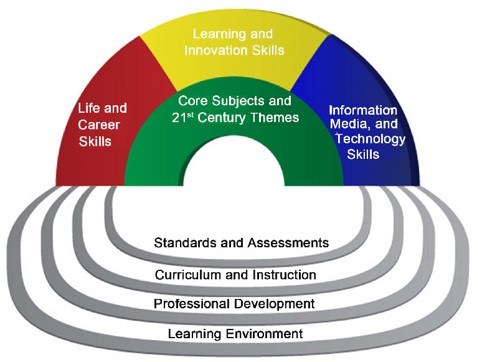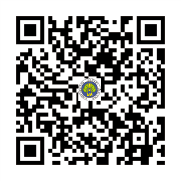Efektivitas Model Workshop Berorientasi P-21 pada Motivasi Guru Sekolah Dasar
DOI:
https://doi.org/10.17977/um067v3i5p193-207Keywords:
workshop, P-21, motivation, elementary school teacherAbstract
21st century learning has great challenges for primary school teachers. Teachers must have professional competence to develop 21st century skills-oriented learning. This study aims to produce a training model for elementary school teachers in 21st century learning. This study uses Research and Development with ADDIE (Analysis, Design, Develop, Implement, and Evaluate) procedures. The trial design used a one group pretest-posttest experimental design. The effectiveness of the model is measured on the understanding and motivation of teachers during the workshop. The subjects of this study were Muhammadiyah elementary school teachers located in Minggir District, Sleman Regency, DIY. The data analysis technique used descriptive statistics (mean, standard deviation, and categorization). The results of the content validity test based on the input of 2 experts who were analyzed using Aiken V showed that in the aspects of content, presentation, and language each got a value of 0.931; 0.918; and 0.934 which means valid. Motivation of 17% of participants is in the high category, 74% is in the medium category, and 9% is in the low category. Self-efficacy, intrinsic values, cognitive strategies, and self-regulation of participants were in the good category. The four supporting factors still need to be improved. While anxiety is in the moderate category, anxiety must be minimized so that the training can be more effective.
References
Agreda Montoro, M., Ortiz Colón, A. M., Rodríguez Moreno, J., & Steffens, K. (2019). Emerging technologies. Analysis and current perspectives. Digital Education Review, 35, 186–201. http://greav.ub.edu/der/
Al-Zarnūjī, & Al-Dīn, B. (2014). Ta’līm al-muta’allim ṭōrīq at-ta’allumi. Dār ibn Katsīr.
Andriani, D. E. (2010). Mengembangkan profesionalitas guru abad-21 melalui program pembimbingan yang efektif. Jurnal Manajemen Pendidikan, 6(2), 78–92. http://journal.uny.ac.id/index.php/jmp/article/view/3639%0Ahttp://journal.uny.ac.id/index.php/jmp/article/download/3639/3112
Barber, M., & Moushed, M. (2007). How the World’s Best Performing Schools Come Out on Top. McKinsey & Company.
Baroya, E. H. (2018). Strategi Pembelajaran Abad 21. Jurnal Lembaga Penjaminan Mutu Pendidikan Prov. DIYogyakarta, I(01), 101–115.
Bryan, R. R., Glynn, S. M., & Kittleson, J. M. (2011). Motivation, achievement, and advanced placement intent of high school students learning science. Science Education, 95(6), 1049–1065. https://doi.org/10.1002/sce.20462
Care, E. (2018). Twenty-First Century Skills: From Theory to Action (pp. 3–17). https://doi.org/10.1007/978-3-319-65368-6_1
Care, E., Griffin, P., & Wilson, M. (2018). Assessment and Teaching of 21st Century Skills Research and Applications. Educational Assessment in an Information Age, January, 119–130. https://doi.org/10.1007/978-3-319-65368-6
Creswell, J. W. (2012). Educational Research: Planning, Conducting, and Evaluating Quantitative and Qualitative (4th ed.). Pearson Education Inc.
Darling-Hammond, L. (2006). Constructing 21st-Century Teacher Education. Journal of Teacher Education, 57(3), 300–314. https://doi.org/10.1177/0022487105285962
Dobudko, T. V, Korostelev, A. A., Pugach, O. I., Ippolitova, N. V, Khayrullina, R. G., & Sitdikov, F. F. (2019). Training Of Pedagogical Education Masters: Practice-Oriented Model. Humanities & Social Sciences Reviews, 7(4), 1155–1159. https://doi.org/10.18510/hssr.2019.74157
Effendi, D., & Wahidy, A. (2019). Pemanfaatan Teknologi dalam Proses Pembelajaran Menuju Pembelajaran Abad 21. Pemanfaatan Teknologi Dalam Proses Pembelajaran Menuju Pembelajaran Abad 21, 2, 125–129. https://jurnal.univpgri-palembang.ac.id/index.php/Prosidingpps/article/view/2977/2799
Fadriati, F. (2020). Model Pelatihan Untuk Meningkatkan Kompetensi Guru Pendidikan Agama Islam Sekolah Dasar. Ta’dib, 23(2), 249. https://doi.org/10.31958/jt.v23i2.1449
Febriana, R. (2016). Identifikasi Komponen Model Pelatihan Pedagogi untuk Meningkatkan Profesionalitas Calon Guru Kejuruan. Jurnal Pendidikan Teknologi Dan Kejuruan, 23(1), 79. https://doi.org/10.21831/jptk.v23i1.9487
Gómez-Rey, P., Barbera, E., & Fernández-Navarro, F. (2017). Student voices on the roles of instructors in asynchronous learning environments in the 21st Century. International Review of Research in Open and Distance Learning, 18(2), 234–251. https://doi.org/10.19173/irrodl.v18i2.2891
Hargreaves, A., & Fullan, M. (2000). Mentoring in the New Millennium. Theory Into Practice, 39(1), 50–56. https://doi.org/10.1207/s15430421tip3901_8
Hidayah, R., Salimi, M., & Susiani, T. S. (2017). Critical Thinking Skill: Konsep dan Inidikator Penilaian. Taman Cendekia: Jurnal Pendidikan Ke-SD-An, 1(2), 127. https://doi.org/10.30738/tc.v1i2.1945
Jackson, C. R. (2018). Validating and Adapting the Motivated Strategies for Learning Questionnaire (MSLQ) for STEM Courses at an HBCU. AERA Open, 4(4), 233285841880934. https://doi.org/10.1177/2332858418809346
Johannes, J. (2018). Meningkatkan Kompetensi Profesional Guru Dalam Menyusun RPP Melalui Workshop. Jurnal Pena Edukasi, 5(2), 95–98. http://jurnal.goretanpena.com/index.php/JPE/article/view/179
Kışoğlu, M. (2018). An examination of science high school students’ motivation towards learning biology and their attitude towards biology lessons. International Journal of Higher Education, 7(1). https://doi.org/10.5430/ijhe.v7n1p151
Klimova, B. F. (2011). Motivation for learning English at a university level. Procedia - Social and Behavioral Sciences, 15, 2599–2603. https://doi.org/10.1016/j.sbspro.2011.04.153
Kurwidaria, F., Sumarwati, S., & Wardani, N. E. (2019). Model Pelatihan Penyusunan Perangkat Pembelajaran untuk Meningkatkan Kompetensi Guru Bahasa Jawa SMP di Kabupaten Karanganyar. Jurnal VARIDIKA, 1(1), 8–16. https://doi.org/10.23917/varidika.v1i1.8899
Liu, Y. (2015). The longitudinal relationship between Chinese high school students’ academic stress and academic motivation. Learning and Individual Differences, 38, 123–126. https://doi.org/10.1016/j.lindif.2015.02.002
Martini, E. (2018). Membangun Karakter Generasi Muda Melalui Model Pembelajaran Berbasis Kecakapan Abad 21. Jurnal Pancasila Dan Kewarganegaraan, 3(2), 21–27. https://doi.org/10.24269/jpk.v3.n2.2018.pp21-27
Maryani, I., & Damayanti, V. (2016). Identifikasi permasalahan guru di Indonesia dalam menghadapi ASEAN economic community. Seminar Nasional “Optimalisasi Peran Pendidikan Dalam Membangun Karakter Anak Untuk Menyongsong Generasi Emas Indonesia,” 226–232. http://eprints.uad.ac.id/3817/
McLean, A. (2009). Motivating every learner. Sage. https://books.google.co.id/books?hl=en&lr=&id=oE9UStVN_CcC&oi=fnd&pg=PP2&dq=Motivating+every+learner&ots=XG57JDwBAQ&sig=-FFDs0XbW8A4-pJffQ1UPBrmTBc&redir_esc=y#v=onepage&q=Motivating every learner&f=false
Pintrich, P. R., & De Groot, E. V. (1990). Motivational and self-regulated learning components of classroom academic performance. Journal of Educational Psychology, 82(1), 33–40. https://doi.org/10.1037/0022-0663.82.1.33
Roni Hamdani, A., & Priatna, A. (2020). Efektifitas Implementasi Pembelajaran Daring (Full Online) Dimasa Pandemi Covid- 19 Pada Jenjang Sekolah Dasar Di Kabupaten Subang. Didaktik : Jurnal Ilmiah PGSD STKIP Subang, 6(1), 1–9. https://doi.org/10.36989/didaktik.v6i1.120
Safarati, N., Rahma, Fatimah, & Sharfina. (2020). Pelatihan Inovasi Pembelajaran Mengahadapi Masa Pandemic Covid-19. Communnity Development Journal, 1(3), 240–245. http://bit.ly/WebinarPendFisika.
Shukshina, T. I., Buyanova, I. B., & Neyasova, I. A. (2018). Substantive-Processual Aspects of Professionally-Oriented Training Organization of Students of Pedagogical University. Astra Salvensis - Revista de Istorie Si Cultura, VI(Special), 665–674. https://www.ceeol.com/search/article-detail?id=687559
Sijabat, L. (2014). Meningkatkan Kompetensi Guru Menyusun Instrumen Tes Melalui Model Pelatihan SSOTT. Jurnal Pendidikan Dan Kepengawasan, 1(1), 107–118.
Slameto, Sulasmono, B. S., & Wardani, K. W. (2017). Peningkatan Kinerja Guru Melalui Pelatihan Beserta Faktor Penentunya. Jurnal Pendidikan Ilmu Sosial, 27(2), 38–47. http://journals.ums.ac.id/index.php/jpis/article/view/5718
Sulistya, R. (2019). Heutagogi Sebagai Pendekatan Pelatihan Bagi Guru Di Era Revolusi Industri 4 . 0. Pendidikan Dan Kebudayaan, 4(2), 127–138.
Sulisworo, D., Nasir, R., & Maryani, I. (2017). Identification of teachers ’ problems in Indonesia on facing global community. International Journal of Research Studies in Education, 6(7), 81–90. https://doi.org/10.5861/ijrse.2016.1519
Susatya, E. (2013). Pengembangan Model Pelatihan Guru Sekolah Menengah Kejuruan Kelompok Seni dan Budaya. Jurnal Pendidikan Dan Kebudayaan, 19(1), 107. https://doi.org/10.24832/jpnk.v19i1.111
Taheri-Kharameh, Z., Sharififard, F., Asayesh, H., Sepahvandi, M., Hajimohamad, M., & Hoseini. (2018). Relationship between Academic Self-efficacy and Motivation among Medical Science Students. Journal of Clinical & Diagnostic Research, 12(7). https://doi.org/10.7860/JCDR/2018/29482.11770
Tibbetts, Y., Canning, E. A., & Harackiewicz, J. M. (2015). Academic Motivation and Performance: Task Value Interventions. In International Encyclopedia of the Social & Behavioral Sciences: Second Edition (Second Edi, Issue August 2017). Elsevier. https://doi.org/10.1016/B978-0-08-097086-8.26078-9
Trilling, B., & Fadel, C. (2009). 21st century skills: Learning for life in our times. John Wiley & Sons, Inc.
Valinasab, S., & Zeinali, A. (2018). The mediational pathway among academic emotions, self-regulated learning, and academic motivation with academic achievement of high school students. International Journal of Educational and Psychological Researches, 3(4), 255. https://doi.org/10.4103/jepr.jepr_3_17
Voogt, J., & Roblin, N. P. (2012). A comparative analysis of international frameworks for 21 st century competences: Implications for national curriculum policies. Journal of Curriculum Studies, 44(3), 299–321. https://doi.org/10.1080/00220272.2012.668938
Wahira. (2011). pengembangan Model Pelatihan Apresiasi Seni Tari Tradisi Lokal pada Guru di Sekolah Dasar. Jurnal Penelitian Pendidikan, 28(2), 125226. https://doi.org/10.15294/jpp.v28i2.5636
Windrawanto, Y. (2015). Pelatihan dalam Rangka Pengembangan Keprofesian Berkelanjutan Guru: Suatu Tinjauan Literatur. Satya Widya, 31(2), 90. https://doi.org/10.24246/j.sw.2015.v31.i2.p90-101
Woolfolk, A. (2000). Educational psychology in teacher education. Educational Psychologist, 35(4), 257–270. https://doi.org/10.1207/S15326985EP3504_04
Woolfolk, A., & Shaughnessy, M. F. (2004). An interview with Anita Woolfolk: the educational psychology of teacher efficacy on JSTOR (2nd ed., Vol. 16). Pearson. https://www.jstor.org/stable/23363838?casa_token=VuJEL6jNG8sAAAAA%3A5CGmtnmOsAtsSD6VEQkf9UbtQljonN9A7DHjgLb29OtpH_sRH_8cKk1K4vkwesZDD2Bog7fjT8wx-uhqs1UTPUpK-UYN015IFCdpkCk2SYwMezKoHQA&seq=1#metadata_info_tab_contents
Yadegaridehkordi, E., Iahad, N. A., & Ahmad, N. (2015). User perceptions of the technology characteristics in a cloud-based collaborative learning environment: A qualitative study. International Journal of Technology Enhanced Learning, 7(1), 75–90. https://doi.org/10.1504/IJTEL.2015.071923
Yulmasita Bagou, D., & Suking, A. (2020). Analisis Kompetensi Profesional Guru. Jambura Journal of Educational Management, 1(2), 122–130. https://doi.org/10.37411/jjem.v1i2.522

Downloads
Published
How to Cite
Issue
Section
License

This work is licensed under a Creative Commons Attribution-ShareAlike 4.0 International License.



1.png)
4.png)










